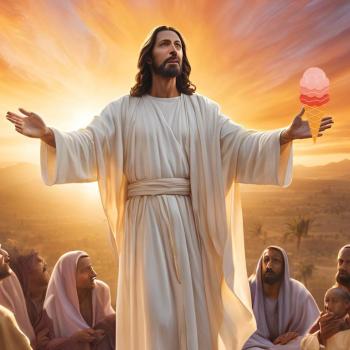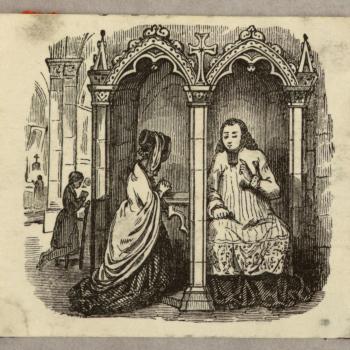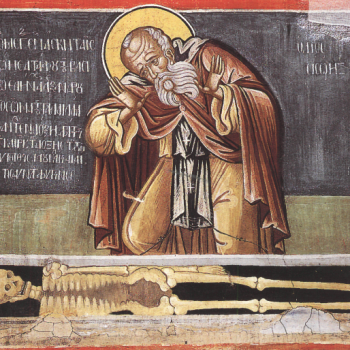
Pentecostal Christians are Protestant Christians who trace their spiritual roots to the charismatic religious traditions that developed in the early 20th century. Pentecostal Christians emphasize conversions to the faith that are followed by a second experience, an encounter with God called "the baptism of the Holy Spirit." This Spirit-baptism should result in visible evidence of God's presence, such as speaking in tongues, prophesying, healing, and exuberant praise. Their core theological beliefs—about God, the Bible, the way of salvation, and the role of the Church—are largely the same as those of other Protestant Christians and they are usually considered a part of the Evangelical movement.
Pentecostalism is an extension of the Holiness Movement that began in the 18th century with the Anglican John Wesley (1703-1791). Wesley believed that faith in Christ would lead believers into sanctification—lives of increasing holiness. To that end, he developed "methods" for believers to use in their developing lives of faith. Those "methods" became so widespread that his followers were called Methodists. This Holiness Movement quickly took root in the United States during the early 19th century and led to forms of the Christian faith that focused on moral behavior and lives of godliness. These teachings converged with the revivalist movements of the Second Great Awakening, infusing preaching and conversions at various camp meetings throughout the country with the invitation to experience the Spirit in new ways.
In the early 1900s, William Seymour, the son of former slaves, began to prepare for a life in the ministry. After studying the teachings of Bible teacher Charles Parham, a minister in the Holiness tradition, Seymour believed that the second baptism of the Spirit, a new and different experience after conversion, was necessary. When he moved to Los Angeles, he began to preach about this Pentecostal baptism. Seymour's preaching electrified his audience, and his Church—the Azusa Street Mission—became the center of a large, multiracial community that focused on the gifts of the Spirit and ideals of social reform.
The Azusa Street success—and particularly its racially diverse congregation—attracted the attention of other Holiness leaders, and after a few years, the discouraging actions and pressures from other ministers on Seymour forced the Church to reemerge as an African American congregation only.
Charles Parham, Seymour's former teacher, had also continued to pursue these ideas. He founded Bethel Bible, a mission in Topeka, Kansas, where he taught the need for Spirit baptism. He believed that such an experience would make itself evident in a sign—the ability to speak in tongues. One of his students experienced this on January 1, 1901, leading to a flood of such experiences and the establishment of a network of churches. At one point, Parham tried to take over the Azusa Street Mission.
Because the Pentecostal movement was birthed out of Holiness traditions, it retained a theological diversity around issues of sanctification, the Christian life and practice, the expectations of holiness, etc. For example, the Assemblies of God focused on sanctification as a completed work of God upon conversion, whereas the Church of God in Christ continued to argue that sanctification was a separate, second baptism of grace. The movement also fell back into the segregation of the early 1900s, creating different branches of separate black Pentecostal churches and white Pentecostal churches.
Pentecostal Christians retain the two central rituals of the Church—baptism and the Lord's Supper. Some also practice foot-washing and anointing with oil. Nearly all Pentecostal Christians include time for healing prayers and prophetic words during their services. Community prayers for baptism in the Spirit often result in a wide variety of experiential expressions, including speaking in tongues, being "slain in the Spirit," shaking or quaking, prophetic cries, and exuberant praise.
One 20th-century sect of Pentecostalism has been particularly effective in using social media to advance their message. This is the Word of Faith movement, and its most prominent voices have included Oral Roberts, Kenneth Copeland, Kenneth Hagin, and, more recently, Creflo Dollar, Joyce Meyer, T.D. Jakes, and others. Their influence has been international and has introduced new emphases into Christian teaching. These include the ideas of the prosperity gospel that God rewards positive belief, granting what we claim in faith, and rewarding the generous with material wealth.
Despite the movement's early segregation, Pentecostalism has never lost its focus on social reform, and both traditionally black Pentecostal churches and mostly white Pentecostal churches have spread around the world with astonishing success. Pentecostalism has appealed to many whose experiences with Christianity have been dry, formal, and traditional. In the 1970s, Pentecostal ideas began to filter into mainline Christian denominations, and various Protestant churches, along with Roman Catholics, embraced some of the ideas around gifts of the Spirit and experiences to evidence those gifts. This charismatic movement has remained influential in many ways.
Pentecostalism has changed the face of Christianity. It is the most powerful stream of Christian renewal throughout the world, and research suggests that 25% of all Christians throughout the world are affiliated with some form of Pentecostalism. Its influence is not waning, and the movement is primed to be the most powerful Christian tradition of the 21st century.
Read more about the roots of Pentecostalism here.
4/4/2022 5:12:06 PM











